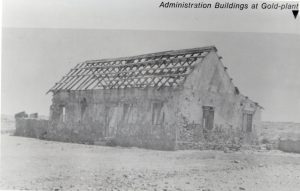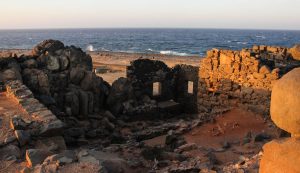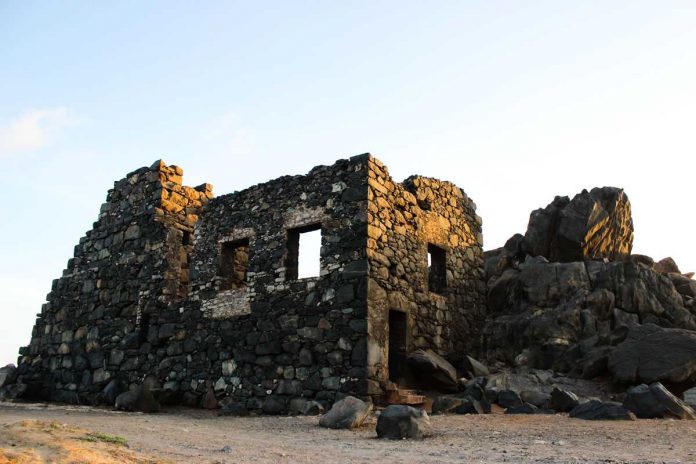(Oranjestad)—The Bushiribana Gold Mill Ruins is one of the most visited places by tourists on the island, as it lies along the northern coast line near the mini pool and on the way to the Natural Bridge. Despite its seemingly plain appearance, this ruin represents one of the most important histories of the island: The Aruban Gold Rush.
Built in 1872 by English company Aruba Island Gold Mining Company Ltd, the gold mill at Bushiribana was constructed in the area where most gold was found by locals. The story of gold on Aruba actually dates back to 1725, when a first exploration for gold on the island was commissioned by the Dutch West India Company. Under the leadership of Mr. Paulus Printz, a three-year search was conducted on Aruba, to no avail. Though they found some gold, it was enough to motivate a further search, and the assignment was discontinued by Printz himself.

It wasn’t until 100 years later, in 1824, when a young boy found a lump of gold while out herding his father’s sheep. His father took it to a local merchant who then sold the lump for $70. Unbeknownst to the boy and his father, they quite literally struck gold, and as word got out, a gold fever spread among the locals who started searching for more gold. About 25 pounds worth was found.
At the same time, the Aruban government took immediate actions, and informed Curacao that gold was found. At first, everyone could look for gold, as long as they sold it to the government. However, after some time, the government decided to implement stricter rules and banned local search parties.

Over the years, concession-holding had seen different companies from around the world, all of which used primitive methods to dig and carve out gold from the rocks. Aruba Island Gold Mining Company Ltd. was no different, but used a unique method that involved grinding the rocks and letting the dust be blown away by the strong northeast wind, leaving clumps of gold behind. The next step was melting the gold and letting it attach to quicksilver in order to obtain pure gold. All these processes were done at the Bushiribana Gold Mill.
The gold mill itself had a short life-span: only 10 years in service, but its structure remained relatively solid till this day, and is now a historical remnant.
Sources: Etnia Nativa & goldmineranch.com.




















